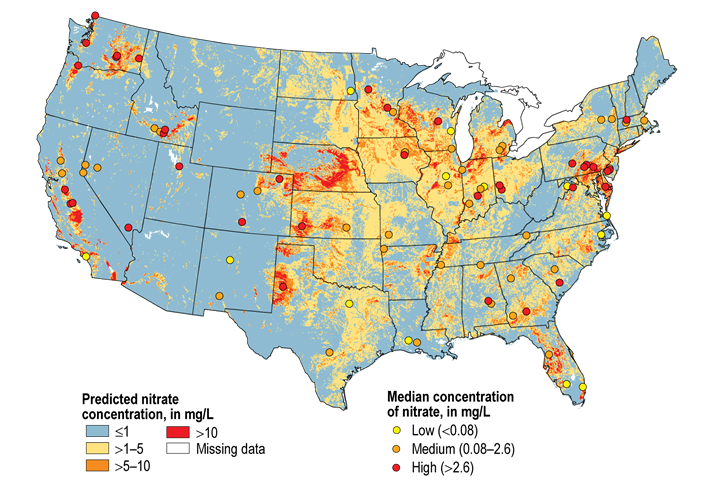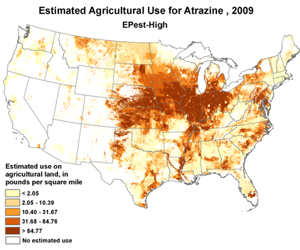The
U.S. Geological Survey’s National Water-Quality Assessment (NAWQA) Program will present a public and Congressional briefing on trends in nutrients and pesticides in the Nation’s rivers and streams on April 11, 2014, at 10:00 a.m. on Capitol Hill, Washington, DC. The briefing will be cosponsored by the
Northeast-Midwest Institute and
Water Environment Federation.
 |
Nutrients concentration in Nation's streams
and groundwater |
At the briefing, Lori Sprague, Surface-Water Trends Coordinator for NAWQA, will present findings on trends in nutrient and pesticide concentrations, focusing on the Mississippi River Basin, which covers about 40% of the Nation. The Mississippi River Basin landscape encompasses many of the agricultural, urban, and climatic influences on water quality that impact national water quality trends. A highlight of the briefing will be information on
trends in nitrate levels from the Mississippi River Basin to the Gulf of Mexico, first reported in late October, 2013.

At the briefing, NAWQA will also address several important questions that have arisen regarding how and why these trends have emerged. For example, nitrate loading to the Gulf of Mexico from the Mississippi River increased more than 10 percent from 1980 to 2010, despite efforts to improve and expand the use of agricultural and urban water quality management practices that might arguably result in a reduction of nitrate loading. NAWQA found that one increasing source of nitrate is the slow movement of nitrate-rich groundwater into streams and rivers. Slow movement of nitrate in groundwater can cause delays in realizing any of the water-quality improvements sought from recently applied nutrient management practices. On the other hand, NAWQA found that pesticide contamination trends are largely dependent on pesticide use (i.e., declining pesticide usage has been reflected in declined water concentrations, while newly introduced pesticides are appearing in increasing concentrations in streams and rivers as their use has increased).
Dr. Suzanne Bricker of the
National Oceanic and Atmospheric Administration’s Coastal Ocean Assessments, Status, and Trends Branch will also speak, describing her work to assess estuarine health and will relate that to the trends seen in NAWQA’s monitoring and assessments.
The briefing will be free and open to the public. Details on the briefing location are yet to be determined, and will be made available at a later date.


No comments:
Post a Comment